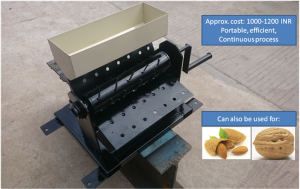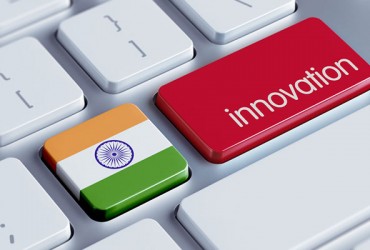Global inclusive development challenges- meeting the unmet needs II
There are problems on which several foundations have thrown billions of dollars but they still remain intractable. Last week I shared several such challenges with examples of some simple extremely affordable solutions but asking for more. Throwing more money doesn’t always help in generating more designs? In fact too much money by big organizations sometime also brings in only bigger actors, like large corporations and institutions offering solution. Since these organisations are often well endowed, their solutions even if some times good are rarely ever extremely affordable. They have not learned the art of frugal innovation yet. The linkage between corporations, large organizations (private or public) and communities, youth and grassroots innovators need to be forged. This is the precise purpose of global inclusive development challenges being launched by SRISTI-UNICEF collaboration.
Way back in 1978-81 when I was involved with an action research project on local district level support to development administration to address unmet needs in drought prone regions, we learned one of the pervasive lesson. When solutions are easily accessible and affordable, many public agencies lose interest in spreading them around. So the alacrity which extension messages in agriculture and health involving purchased inputs spread, the non-monetary input based solutions don’t diffuse as widely and fast. Distorted incentive structure and lack of efficient monitoring and lubrication of the delivery chain (which in the case of purchased inputs based solutions, private sector does) are also a problem. But despite all these problems, we need to find better ways of solving problems and find even better ways of delivering them to millions of needy women, children youth etc.
Let me state three more challenges which we wish to launch shortly, suggestions are welcome right away. First, the deficiency of Vit A and D is becoming epidemic as also vit B12 due to too much RO water. A NIH study (2016) found that almost 80 per cent of people relying on RO water were deficient in B12. The challenge is to not only discover community means of overcoming these problems, identify hotspots of sufficiency that is where even poor people are not deficient in these nutrients such as coastal communities. But we need to find many more such areas and local innovative practices. We should also identify community communication practices, folkloric encoding of nutrition linked messages. My mother fed us spinach by calling it ‘buddhi wala sag’ that is a curry which increased brain power. Our resistance gave way, we developed taste for it eventually. Thus identification of region specific traditional foods, herbs, grains, other sources (such a local dishes involving sprouted wheat or other grains) delivered in equally innovative and creative ways may be one solution. There could be many other ways which may appeal to poor working women, children and youth as a joyful engagement. GIAN has been experimenting with mobile community food and nutrition kitchen/workshops to enable elderly women to teach youth about not just healthy foods but also healthy method of cooking them.
Second, almost all the tree/shrub nuts in forest where tribal people live mostly are crushed manually. Low cost crushers suitable for a variety of nuts is an urgent need to improve productivity and income of some of the poorest people of the country. In the last two Summer Schools on Inclusive Innovations, students from the top technology institutions developed a few prototypes for the purpose using slightly conical cylinders moving in opposite direction manually to crush nuts of different sizes and thickness. But we need many more solutions so that women and men can use it youth can set up small enterprises and children labour can be eliminated from this activity. SRISTI’s earlier study with ILO (Childhood Unchained) showed that whenever productivity is low, the exploitation of child labour becomes inevitable. Therefor for ensuring a better promising future for our children, it is most necessary that we remove drudgery from all rural and urban processing activities and let them gain their right to joyful healthy childhood.
Third challenge I wish to discuss is about the low cost –paddy transplantation and intercultural devices for women in paddy and other crops. Millions of women transplant paddy in back bending posture with feet in water for weeks and weeks. Their feet develop ulcers, back aches but without transplanting paddy, there will be no food for the family in rainfed regions. NIF had also issued this challenge but we could not get very good solutions os far.We need low cost easy to maintain, not too heavy manual transplanters and weeders which can reduce their drudgery, improve productivity and help them save time to do other productive things.
We look forward to hear from the readers worldwide and hope that we will be able to overcome our civilizational inertia, so deeply embedded in our worldview that we don’t even see these as problems, much less to solve them. Write back to us soon at info@sristi.org
and become an active player in making our world more inclusive, innovative and healthy for women, children and youth among others.
—



